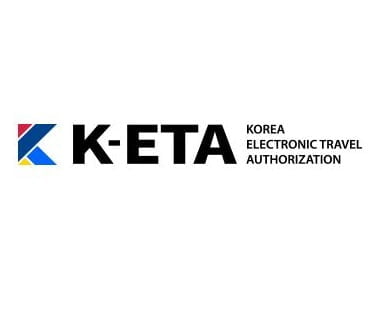Travel to Korea – K-ETA Application
Note: As of April 1, 2023, K-ETA requirements have been waived for several nationalities, such as US citizens, so please check with travel experts or your embassy in South Korea.
K-ETA (Korea Electronic Travel Authorization) is an online electronic authorization for travel to Korea for visa-free foreign visitors, which can be obtained before entering the Republic of Korea (ROK) for the purpose of tourism, to visit relatives, participate in events or meetings, or to conduct business (except profit-making activities).
Pureum Law Office (PLO) has received numerous questions about K-ETA since it was implemented on September 1, 2021, so we summarize the most relevant FAQs below.

Q1. Who can apply for K-ETA (K-ETA Application)?
Due to COVID-19, nationals from 50 countries/regions who want to enter the Republic of Korea visa-free (refer to table 1) can apply for K-ETA.
– Since K-ETA was implemented on September 1, 2021, those who previously entered Korea without a visa should apply for K-ETA. Airlines may refuse boarding for nationals of nations eligible for the program if they do not have a valid K-ETA.
– Nationals from 62 countries/regions (refer to table 2) where visa-free entry has been temporarily suspended are required to obtain a visa from a ROK diplomatic mission (as of January 2022).
| [TABLE 1] 50 Eligible Countries and Regions for K-ETA |
| Albania, Andorra, Barbados, Dominica, Guam, Guyana, Holy See, Ireland, Malta, Mexico, Monaco, New Caledonia, Nicaragua, Palau, Saint Kitts-Nevis, Saint Vincent and the Grenadines, San Marino, Slovenia, United Kingdom, United States of America, Venezuela, Greece, Netherlands, Denmark,Germany, Latvia, Romania, Luxembourg, Lithuania, Belgium, Bulgaria, Cyprus, Sweden, Spain, Slovakia, Estonia, Austria, Italy, Czech Republic, Croatia,Portugal, Poland, France, Finland, Hungary, Norway, Switzerland, Liechtenstein, Iceland, Singapore |
| [TABLE 2] 62 Countries and Regions Currently Suspended for K-ETA | |
| Asia (16) | Macau, Malaysia, Bahrain, Brunei Darussalam, Saudi Arabia, United Arab Emirates, Oman, Israel, Japan, Kazakhstan, Qatar, Kuwait, Taiwan, Thailand, Turkey, Hong Kong |
| Americas (23) | Guatemala, Grenada, Dominican Republic, Bahamas, Brazil, Saint Lucia, Suriname, Haiti, Antigua and Barbuda, El Salvador, Uruguay, Jamaica, Chile, Costa Rica,Colombia, Trinidad and Tobago, Panama, Peru, Canada, Argentina, Honduras, Paraguay, Ecuador |
| Europe (4) | Russia, Montenegro, Bosnia and Herzegovina, Serbia |
| Oceania (11) | Nauru, New Zealand, Marshall Islands, Micronesia, Samoa, Solomon Islands, Kiribati, Fiji, Tonga, Tuvalu, Australia |
| Africa (8) | Republic of South Africa, Lesotho, Morocco, Mauritius, Botswana, Seychelles, Eswatini, Tunisia |
Q2. How do I apply for K-ETA?
You can apply for yourself or on behalf of somebody else in English and Korean via the official K-ETA website or by using its mobile application (available on Play Store).
Q3. What purposes of visit are allowed for entry to Korea with K-ETA?
K-ETA is an online travel authorization for nationals of visa-free entry countries need to obtain before entering the Republic of Korea for the purpose of tourism, to visit relatives, participate in events or meetings, or to conduct business (excludes profit-making activities). If your purpose of visit falls under these guidelines, you may enter Korea using K-ETA and without a visa. If your purpose of the visit is for employment, study, immigration, etc., then you must obtain an appropriate visa at a ROK diplomatic mission.
Q4. How do I enter an address for where I will be staying?
To search for the address, click the [Find Postal Code] button and enter both the 5-digit postal code and road name (exclude building number) in English in the ‘Address Finder’ pop -up window. Note that Korean text and special characters like hyphens (-) will prevent the process from continuing.
Q5. When uploading my photo, it says that the file size has been exceeded. What do I do?
Due to high traffic volume, there is a photo file size limit of 100KB and 700 x 700 pixels. If you cannot resize your photo, install the K-ETA mobile application to take a new one, which will be resized and uploaded automatically.
Q6. How much is the K-ETA fee?
The K-TA application fee is KRW 10,000 per person (additional charges excluded) that can be paid using a global online payment enabled international credit or debit card (e.g. VISA, Master Card, JCB, AMEX). Application fees are non-refundable once payment has been made, regardless of your application being approved or rejected.
Q7. I’m a citizen of country which has had its visa- free entry suspended, but I reside in a country/region where it is available. Can I apply for K-ETA?
K-ETA eligibility is based on the nationality of an applicant’s passport, not the place of departure or residence, or possession of visas from other nations (including permanent residency). As such, those holding a passport from a country that has had its visa-free entry status suspended, you must obtain a visa to enter Korea.
Q8. When I select my nationality, it says “Selected country/region is not eligible or has been temporarily suspended for K-ETA”. What should I do?
Nationals of visa-waiver countries/regions (B-1) and designated visa-free entry countries/regions (B-2) are eligible for K-ETA (112 regions). However, COVID-19 restrictions limit K-ETA eligibility to nationals of 50 countries/regions (refer to Q1). Those from suspended or ineligible regions must obtain a visa at the nearest ROK diplomatic mission.
Q9. Can I apply for K-ETA via private agency websites?
No, the official K-ETA website and its mobile application are the only official application channels operated by the Korean Government. However, you can hire a private lawyer or law firm to receive legal assistance when applying for your K-ETA.
Q10. How can I apply for K-ETA for ‘Priority Entry (Business) Persons’?
The domestic company must apply for K-ETA ‘Priority Entry (Business) Persons’ through the department in charge related to their business institutional industry on behalf of the foreign invitees.
After verifying the entry purpose, the department in charge sends an official letter to the Korean Ministry of Justice to review the validity of the K-ETA issuance.
For more information, refer to [Notice]-[K-ETA Application Guide for ‘Priority Entry (Business) Persons’ (effective from 1 September)] updated on the official K-ETA website.
Q11. I have both Korean and foreign nationality. Do I need to apply for K-ETA?
Those with South Korean citizenship must use their Korean passport to enter and leave the ROK, so they need not apply for K-ETA.
Q12. If I obtain K-ETA approval, am I exempted from quarantine? And where do I apply for quarantine exemption?
K-TA is irrelevant to quarantine exemptions. For quarantine-related matters, contact the Korea Disease Control and Prevention Agency and for quarantine exemption, contact a ROK diplomatic mission under the Ministry of Foreign Affairs. (See our post anent this topic.)
Q13. Is it possible to extend the period of stay after entering Korea via K-ETA?
In principle, foreign nationals cannot stay in South Korea beyond the period granted upon entry. Long-term stays require an appropriate visa issued by a ROK diplomatic mission. Those entering Korea visa-free via K-ETA can stay up to the visa-free sojourn period* granted to their country per visit. For details, refer to [Notice]-[Allowed Period of Stay by Country Eligible for K-ETA] updated on the official K-ETA website.
Q14. Can I change the status of stay after entering Korea via K-ETA?
In principal, those wishing to enter Korea for profit-making activities, study, or work must obtain a visa suitable for such purposes at a ROK diplomatic mission (not K-ETA). Those entering South Korea using K-ETA cannot by rule change their status of stay, but exceptions might be possible, contact the 1345 Immigration Contact Center or Hi Korea.
If you have more questions, please contact us here at PLO and watch the YouTube video below.



